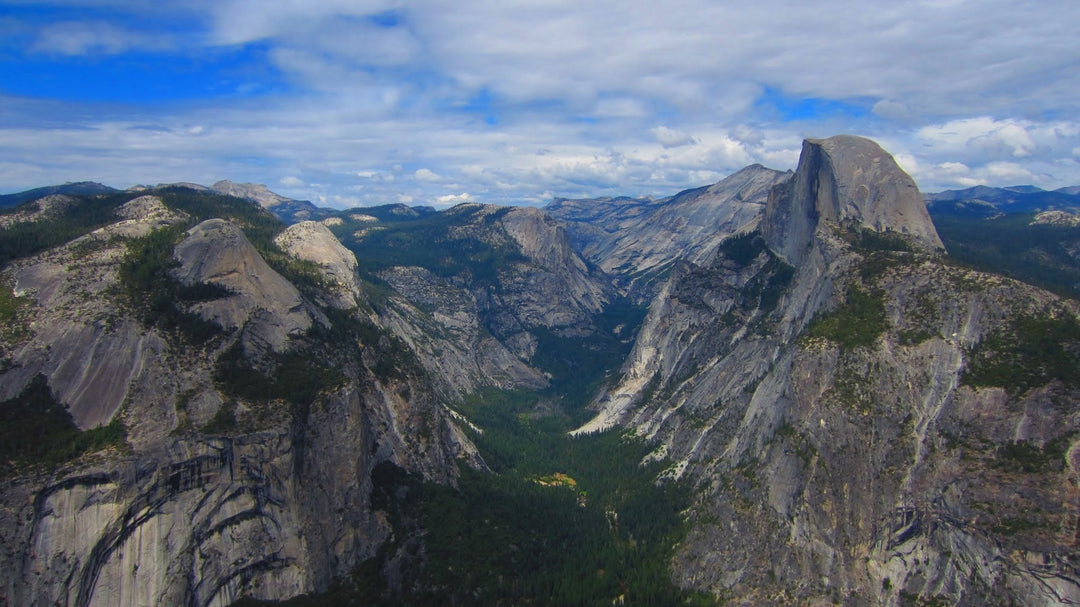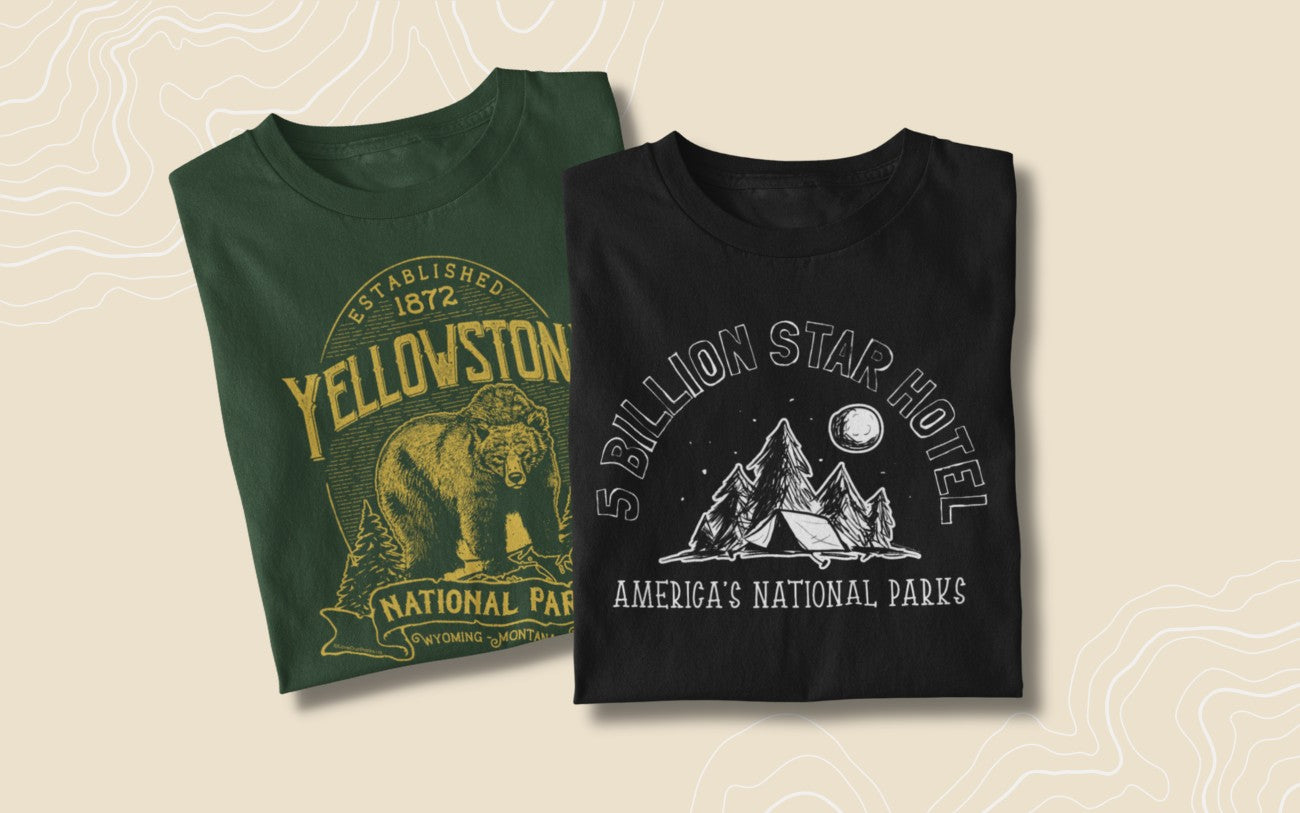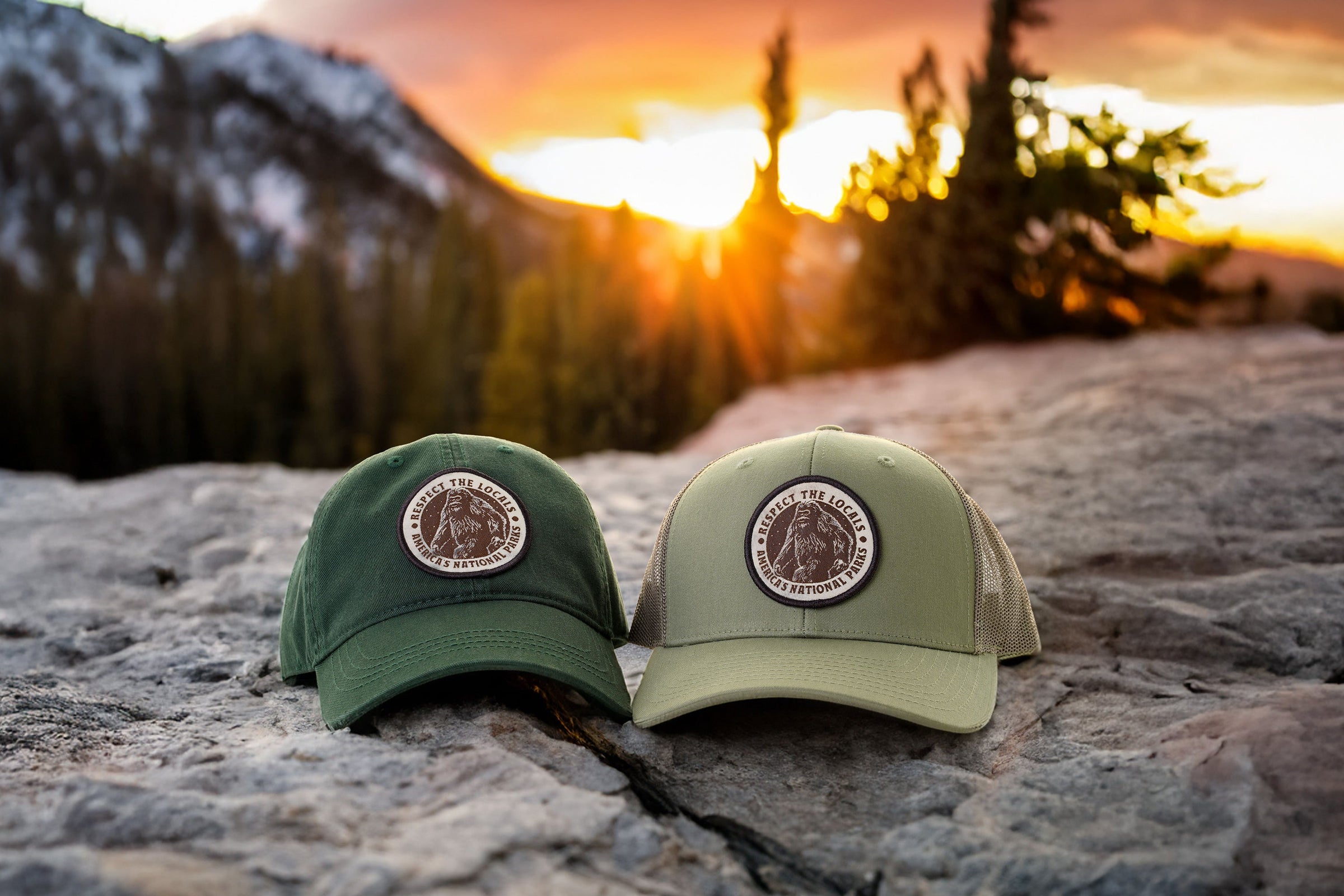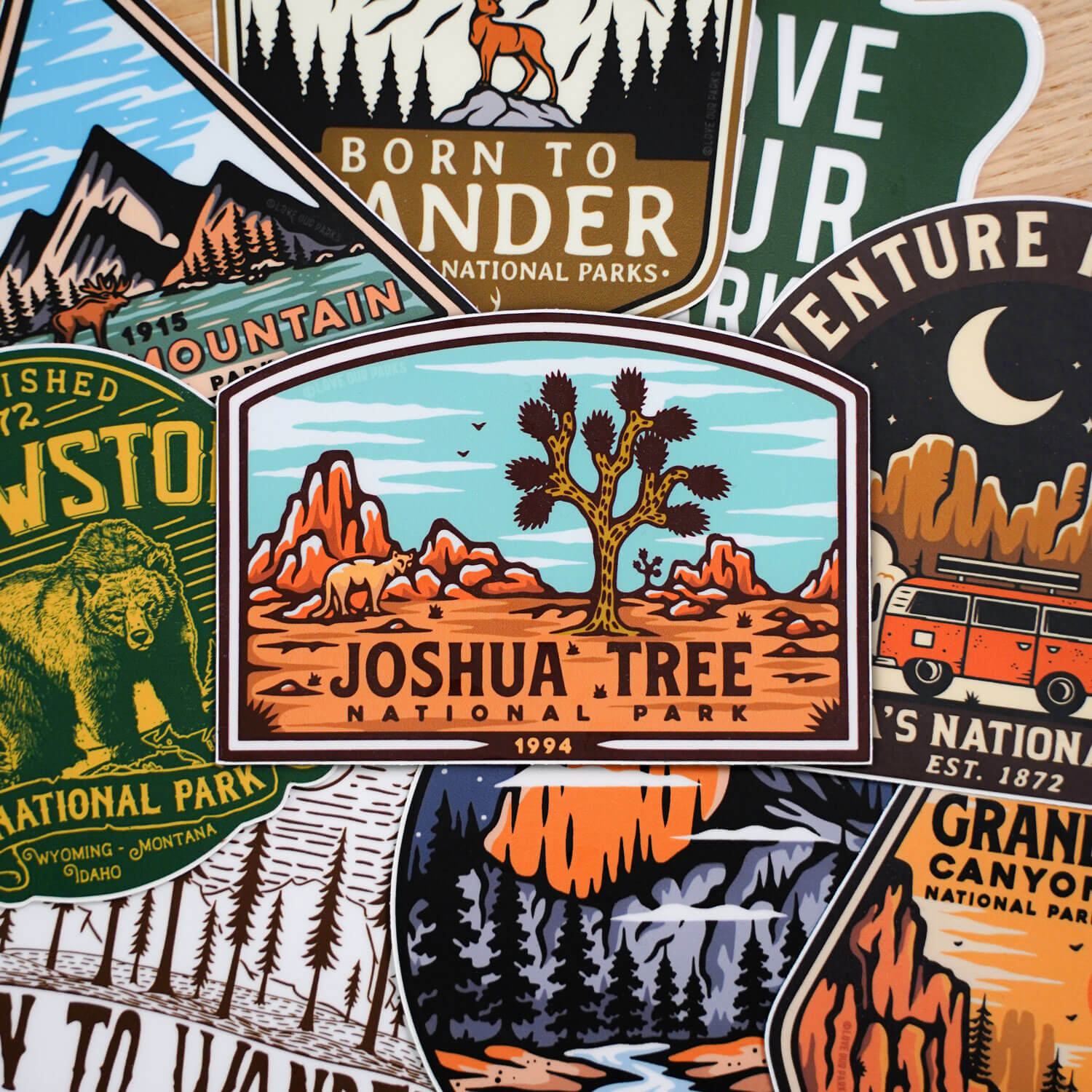Hidden Figures Who Helped Shape Our National Parks
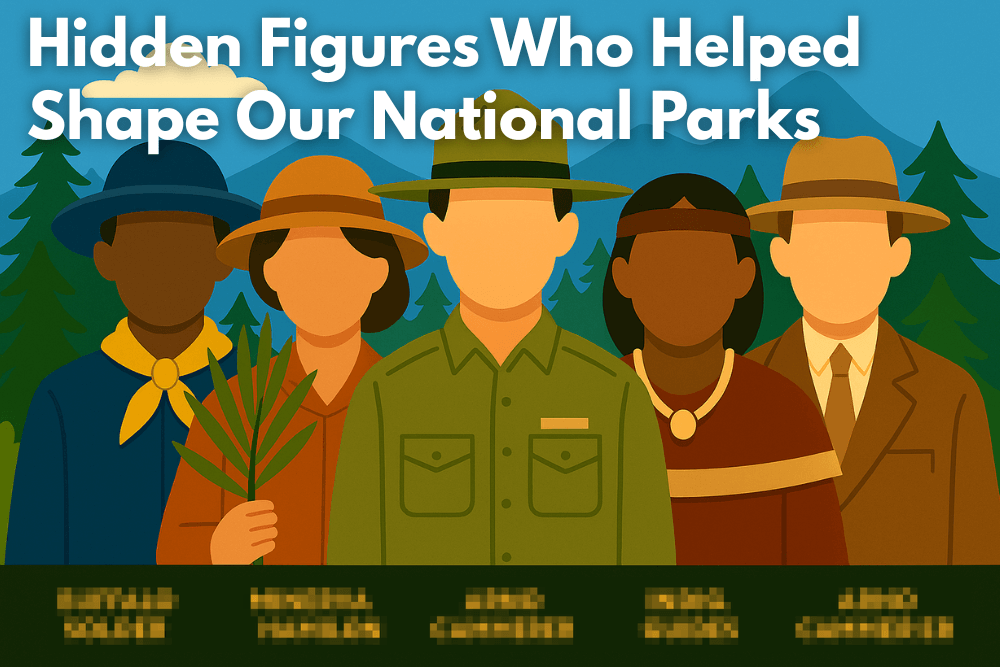
America's national parks are revered as awe-inspiring wildernesses shaped by the efforts of pioneers like John Muir and Stephen Mather. Yet, beneath those magnificent peaks lies a wealth of rich, often overlooked history—tales of unrecognized heroes who deserve our acknowledgment. Women, people of color, Indigenous leaders, and just everyday individuals have made an incredible impact on our National Parks over the years, even in the face of adversity. When we take a moment to hear their stories, it lets us appreciate our amazing National Parks even more and feel a deeper connection to them.
Let's pay tribute to their contributions and honor the diverse voices that have molded the natural splendor we hold dear today!
The Buffalo Soldiers: America's First Park Protectors

In the early days of Yosemite and Sequoia, before the National Park Service even existed, it was African American soldiers—known as Buffalo Soldiers—who patrolled the land. Between 1891 and 1913, the U.S. Army was tasked with managing these wild spaces, and Black troops from the Ninth Cavalry and 24th Infantry were regularly assigned to this duty. Their role in the parks was groundbreaking: they were among the first people in the world to serve in a capacity resembling what we now call park rangers.
Each summer, groups of up to 60 soldiers would travel into the remote mountains of California to build roads, repair trails, prevent poaching, and protect the forests from illegal grazing. Most of these men were veterans of the Spanish-American or Philippine-American wars, and while facing racism both in the military and broader society, they brought dedication and discipline to a job few others wanted.
Military service was, for many, one of the only reliable avenues to financial stability and a better life. Taking on the task of guarding national parks was both a duty and a chance to participate in something larger than themselves—the shaping of America's public lands.
One of the most remarkable figures from this era was Captain Charles Young. As the third African American to graduate from West Point, Young was already a pioneer. In 1903, Young was appointed as the acting superintendent of Sequoia and Kings Canyon National Parks (the first black superintendent of a national park). Over that summer, he oversaw the construction of roads and bridges, which opened up additional access to the park—some of which are still in use today. His leadership left a legacy that endured long after his men returned to base.
Although rarely credited in the mainstream stories of our national parks, the Buffalo Soldiers played a pivotal role in shaping and protecting these early landscapes. They served with honor in places where they weren't always welcome and helped lay the groundwork for the conservation ethic that would later define the National Park Service.
Minerva Hamilton Hoyt: Champion of the Desert

At a time when the American conservation movement was focused almost entirely on forests, mountains, and rivers, one woman turned her attention to the quiet, overlooked beauty of the desert. Minerva Hamilton Hoyt, a wealthy transplant from Mississippi to Southern California, became one of the earliest and most influential advocates for the protection of desert landscapes in the United States.
What began as a personal fascination with the strange, sculptural flora of the Mojave Desert soon grew into a passionate mission. Hoyt recognized what few others did in the early 20th century—that the desert was not empty... but alive. She saw value in its Joshua trees, cholla cacti, and volcanic rock formations, and she feared that unchecked development and careless collectors were putting it all at risk.
Rather than settle for admiration, Hoyt organized. She staged exhibitions of desert plants and landscapes in New York, Boston, and even London, using dramatic displays to shift public opinion. She lobbied state and federal officials relentlessly and founded the International Desert Conservation League to advance the cause.
Her efforts paid off in 1936 when President Franklin D. Roosevelt signed a proclamation establishing Joshua Tree National Monument. It was a direct result of Hoyt's advocacy—and a radical step at the time. She had convinced the government to protect over 800,000 acres of arid, spiny, untraditional wilderness.
Hoyt's story is often overshadowed by the men who helped shape the early conservation movement, but her impact is undeniable. She didn't just protect a landscape—she expanded the definition of what America considered worthy of preservation.
Women Rangers: Breaking Barriers in the Wilderness

In the early 20th century, when few women were given roles of authority in public life—let alone in the rugged wilderness—two women quietly helped redefine what it meant to serve in America's national parks.
At Yosemite, Enid Michael broke new ground not by blazing trails on horseback but by dedicating her life to the science and storytelling of the natural world. In 1921, she became the first woman to work as a ranger-naturalist at the park, a role she held for over twenty years. Her work was rooted in observation and education. Michael wrote more than 500 essays, field notes, and articles throughout her career - detailing the park's complex ecosystem.
Meanwhile, in Yellowstone National Park, another trailblazer was changing the way people connected with the landscape. Isabel Bassett Wasson, one of the first female geologists in the U.S., took on the role of an interpretive ranger in 1920.
At a time when public education in parks was still in its infancy, Wasson developed and delivered some of the first structured presentations to help visitors understand the geology beneath their feet. Her talks—delivered with clarity, insight, and enthusiasm—helped set the standard for what park interpretation could be: not just informative, but transformative.
Both women operated in systems that often marginalized their presence, yet they found ways to make lasting contributions. They turned curiosity into action, and action into legacy—leaving behind not only written records and educational programs, but a broader vision of who could speak for the land.
Indigenous Voices: Stewards of Ancestral Lands

Long before the concept of national parks was born, the lands we now visit as protected wilderness were home to Indigenous peoples—communities with deep spiritual, cultural, and ecological ties to the environment. These weren't untouched places; they were actively tended, understood, and revered for thousands of years. The creation of the National Park System often came at great cost to these communities, many of whom were displaced or excluded from lands they had stewarded for generations.
Yet despite this history, Indigenous knowledge has quietly and powerfully shaped the parks we know today.
A striking example comes from the early 20th century. In 1913, during the first successful summit of Mount McKinley—also known by its Indigenous name, Denali—two Native Alaskans played critical roles. Esaias George, a member of the Koyukon Athabaskan people, and John Fredson, of the Neets'aii Gwich'in, provided essential support to the expedition team. Their understanding of the mountainous terrain, weather patterns, and local ecosystems proved indispensable in navigating the challenges of the Alaskan wilderness.
Fredson, who was only a teenager at the time, would go on to become one of Alaska's first Native college graduates and a powerful advocate for Indigenous rights. His journey—from mountain guide to political leader—underscores how Native peoples have not only contributed to park history but have continually worked to protect their cultural landscapes and assert their rightful place in conservation efforts.
These stories are not isolated. Across the country, Indigenous communities have preserved ecological knowledge through oral histories, seasonal migrations, fire practices, and sustainable hunting and harvesting techniques. Their relationships with the land are grounded in reciprocity—a belief that humans are part of nature, not separate from it. This worldview has much to teach us, especially with our modern world's concerns around climate crisis and ecological uncertainty.
Today, many parks are beginning to re-engage with Indigenous communities through co-management agreements, tribal consultation, and efforts to acknowledge ancestral lands in signage and interpretation. But these steps are only the beginning. Recognizing the role of Indigenous people isn't just about correcting historical oversights—it's about enriching our understanding of the parks themselves.
Because these aren't just scenic places—they are living, storied homelands. And Indigenous voices have always been, and must continue to be, part of their future.
Arno Cammerer: The Quiet Architect of Expansion

While the names John Muir and Stephen Mather loom large in the history of America's national parks, another key figure—Arno Cammerer—quietly shaped the system into the vast and varied network we recognize today. As the third director of the National Park Service, Cammerer brought a planner's precision and a visionary's ambition to the agency during a transformative period in the early 20th century.
Cammerer joined the Department of the Interior in 1911 and rose through the ranks with a reputation for diligence and strategic thinking. By the time he assumed the role of director in 1933, the country was in the throes of the Great Depression. But Cammerer saw opportunity amid crisis. He understood that national parks could be more than scenic getaways—they could be engines of employment, pride, and national unity.
Perhaps his most hands-on achievement was the creation of Great Smoky Mountains National Park. Cammerer didn't simply support the idea from behind a desk—he walked the boundary lines himself, studying the terrain and meeting with local stakeholders. He played a key role in navigating the complicated politics of land acquisition in Appalachia, and his close collaboration with philanthropist John D. Rockefeller Jr. secured a crucial $5 million donation to make the park a reality.
But his influence didn't stop there. Under his leadership, the park system expanded dramatically to include diverse ecosystems that had previously been overlooked. Parks like Shenandoah, Olympic, and Everglades were established or significantly advanced during his tenure—each representing a new kind of landscape in the national portfolio: the hardwood forests of Virginia, the misty peaks of the Pacific Northwest, and the watery wilderness of Florida's subtropics.
Cammerer was also instrumental in professionalizing the Park Service itself. He pushed for better planning and design, along with helping to standardize practices across parks and elevate the visitor experience. He believed parks should be more than just places for recreation—they should inspire people and reflect a shared civic identity.
Though not mentioned as frequently as some of his predecessors, Arno Cammerer was able to leave a lasting impact on America's public lands and his determined leadership helped make the national parks a truly national idea.
Reclaiming the Narrative
When we think about national parks, the first names that come to mind are often the same: Muir, Roosevelt, maybe Ansel Adams. And while their contributions are real, they only tell part of the story.
For every photograph taken or speech given, there were people working in the background—often unnamed—who shaped these places in ways we're only just beginning to understand. Soldiers laying down the first roads in Sequoia. Women translating the language of wildflowers and geysers into something the public could connect with. Indigenous guides navigating the land not from maps, but memory.
These stories matter. Not because they rewrite the legacy of the parks, but because they complete it.
Our national parks are not just collections of beautiful places. They're full of human fingerprints—some celebrated, many forgotten. By bringing those overlooked figures into the light, we don't diminish the grandeur of the parks; we deepen it. We recognize that these places weren't just "discovered" or "preserved" by a few great men, but shaped, protected, and understood by many hands—Black, Indigenous, immigrant, and female.
That includes the Chinese laborers who helped build Yosemite’s early roads, the Latino herders who once roamed the Southwest’s open lands, and the young men of the Civilian Conservation Corps—many of them from marginalized communities—who left their sweat in the soil of nearly every park.
To honor these histories isn't about rewriting the past. It's about telling it fully. And when we do, the parks start to feel a little more alive. A little more ours.






